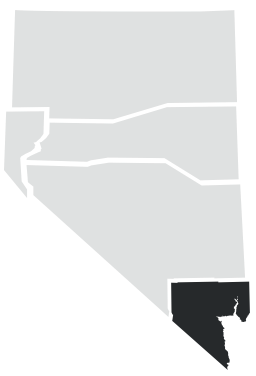“Double Negative” by Michael Heizer
With the most public land in the Lower 48, this land is literally yours. Whether you want to flex the freedom muscle along thousands of miles of OHV trails, soak in more hot springs than anywhere else, camp just about anywhere you want, or immerse yourself in an art movement we bet you have yet to experience—it’s all here. Not a typo. In Nevada, dip a toe or two into environmental art unlike you’ve ever seen with Double Negative by artist Michael Heizer—an earthwork pioneer and one of America’s most famous outdoor land artists, who just so happens to have an affinity for Nevada’s wide open Great Basin.
“There is nothing there, yet it is still a sculpture.”
Michael Heizer
Along with some of the other great land artists like Nancy Holt, Richard Long, Andy Goldsworthy, and Walter de Maria, artist Michael Heizer has created examples of what is referred to as earthworks, land art, or environmental sculpture. Two of these site-specific works are found in Nevada—Double Negative and City. These site-specific installations involve natural materials and the passage of time. The land art movement first became big in the late 1960s, which is when Michael Heizer created Double Negative in Nevada’s Mojave Desert.
Double Negative is two massive trenches near Mormon Mesa, stretching 30 feet wide, 50 feet deep and 1,500 feet long. When Heizer was creating Double Negative, a staggering 240,000 tons of desert rhyolite and sandstone were dug out of the earth to make the trench, creating a striking negative space. This Double Negative space refers to both the natural and man-made negative spaces in this landscape, consisting of what is not there naturally and what has been moved, or displaced. This conceptual art was acquired by the Museum of Contemporary art, Los Angeles (MoCA) in 1985, and though no conservation is currently taking place, Heizer wishes for nature to reclaim the land through weather and natural erosion processes.
Getting There
Michael Heizer’s Double Negative is 80 miles northeast of Las Vegas in Nevada’s Moapa Valley, nearest the southeastern community of Overton, situated on the outskirts of the Overton Airport. From Las Vegas, head northeast on I-15 for 51 miles and take exit 93. From there, continue along NV Highway 169 for 19 miles. Once you’ve made it to downtown Overton, make a left onto Cooper Street, which leads to the Overton Airport. Make a right on Airport Road, and proceed up the road to the top of the Western edge of the Mesa. Once you pass the dump, it will turn onto a dirt road. When you’ve made it to the top of the mesa—this is Mormon Mesa—start tracking your mileage and continue straight across the mesa, and after you’ve traveled 2.6 miles, make your first possible left (at 2.8 miles) onto a small dirt road which is sometimes easy to miss. Make note of your mileage once more, and once you’ve traveled an additional 1.3 miles, the road will fork—take the right fork.
Visiting Double Negative means traveling on dirt roads for 45 minutes or more. Be sure to travel prepared with a four-wheel drive vehicle and spare tire. When traveling into remote desert landscapes, remember to let someone know where you’re headed and when you plan to return, carry plenty of food and water, a hat, proper clothing, paper map, and sunscreen. Remember that traveling in this area during summer months means extreme heat with no shade, and cell phone coverage in the area can be spotty or non-existent.
Hours:
Double Negative is available to visit 24/7, 365 days a year, but is most enjoyable and safest during daylight. Allow at least a half hour before sunset to start leaving Double Negative—retracing your steps out can sometimes be confusing and disorienting.
Admission:
Admission to Double Negative by artist Michael Heizer is always free.
This Location:

City
Moapa ValleyRegion
Southern Nevada
